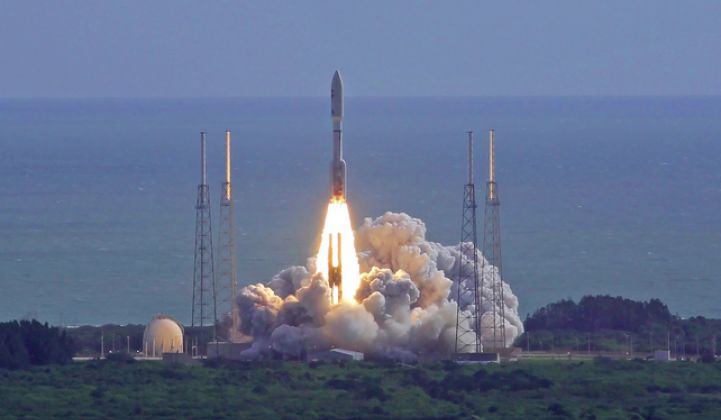We are living in the age of lean innovation. Silicon Valley has developed a robust ecosystem for software companies to rapidly iterate their ideas, failing quickly and efficiently until they gain traction in the marketplace. It's meteoric success or bust.
In this environment, the startup has emerged as the institutional archetype for innovation: give a few highly talented and fiercely committed people $100,000 and some space in a garage, and you’re bound to see sparks fly.
But what about technologies that aren’t so lean? Solar cells were originally developed in the 1950s at Bell Laboratories, an R&D giant with an annual budget of $5 billion in today’s dollars. The technology then followed a tortuous path through niche markets, corporate acquisitions, and government subsidies before seeing significant scale-up half a century later. Hard technologies like these require much more time and capital per learning cycle, a lesson the venture capital community has learned the hard way over the last decade. In response, we’ve seen VC investment into early-stage advanced energy technology startups plummet. Yet these are the very technologies that we’ll need to reshape the physical infrastructure of our energy system for a sustainable future.
Many leading thinkers are calling for greater public and private investment in early-stage R&D to counter this trend. Bill Gates recently weighed in on his personal blog: “Right now, the world spends only a few billion dollars a year on researching early-stage ideas for zero-carbon energy. It should be investing two or three times that much.” ARPA-E has emerged as a highly effective model for injecting government funding into early stage R&D. Meanwhile, new efforts like the PRIME Coalition are working to mobilize philanthropic capital into low-carbon energy innovation through alternative financing mechanisms.
But the downward trend in private-sector funding is troubling not just because it means that fewer dollars are available to support early-stage innovation. It also means that talented hard tech entrepreneurs don’t see a viable route to success in the same way software innovators do. As a consequence, many of our best and brightest entrepreneurial scientists and engineers are leaving for other pursuits, their next-generation innovations left sitting on the shelf. Without harnessing this talent pool and empowering them to go “all in” on their ideas, greater investment on its own may not mean greater impact.
“Today, our highly optimized, venture-capital-driven innovation system is simply not structured to support complex, slower-growing concepts that could end up being hugely significant,” wrote L. Rafael Reif, president of MIT, in the Washington Post this May, adding, "The United States needs a more systematic way to help its bottled-up new-science innovators deliver their ideas to the world.”
We couldn’t agree more. Already, there are a number of new initiatives across the country that are developing and testing new models that enable innovators to translate hard energy technology from science to product.
In Boston, for example, Greentown Labs is taking a community approach to incubating dozens of energy hardware startups at its facility in Somerville. And on our side of the country, Otherlab has been spinning out futuristic technologies grounded in mechanical engineering, applied physics and computer science. These are just two examples of programs that should make us hopeful that our best innovators will soon see many viable pathways to success.
Our program, Cyclotron Road, has its own approach: leveraging the nation’s existing world class R&D infrastructure to support the best people advancing the earliest-stage ideas with the biggest potential for impact. Based in Berkeley, Calif., we recruit top-notch energy innovators from across the nation looking to start hard technology companies and nurture them at Lawrence Berkeley National Laboratory, a world-class research facility. At Berkeley Lab, they can develop their ideas using cutting-edge equipment and collaborating with leading scientists and technical experts. All the while, we provide targeted help with critical technology and manufacturing challenges, and connections to a deep network of academics, engineers, investors, and industry experts who serve as mentors, collaborators, and future commercial partners.
This approach enables a different kind of hard energy technology startup, one that borrows from the lean learning cycles of the software archetype. Being coupled with an existing world-class R&D facility can mean a quick start and millions of dollars in avoided capital, allowing innovators to fail efficiently, redirect their work, and optimize a technology and business model toward the highest likelihood of success before entering the traditional finance cycle. Spark Thermionics, one of our first cohort projects, began testing a critical risk point of its technology at Berkeley Lab within weeks of joining the program. “We gained access to equipment and software that we didn’t know existed…and would have been prohibitively time-consuming to develop on our own,” said Jared Schwede, one of Spark’s co-founders. Our hope is that providing extraordinary leverage at the earliest stage of a project’s lifetime will mean a greater chance of success down the road. If the model proves successful, it could represent an important step in removing the institutional bottleneck for top talent, while boosting the potential impact of every dollar of new investment, whether public or private.
Time will tell which approaches prove to be most effective at enabling solutions to the looming energy and climate crisis. In the meantime, if we want to scale energy innovation, as Gates suggests, it is imperative that we continue to explore new institutional structures alongside efforts to increase financing. Because above all else, our best hope to develop transformative energy technologies is to give our top minds a home to chase the biggest problems and do our best to light the pathway to success.
***
Ilan Gur and Sebastien Lounis lead the Cyclotron Road program at Berkeley Lab, a public-private partnership supported by the DOE Office of Energy Efficiency and Renewable Energy’s Advanced Manufacturing Office. Cyclotron Road's second cohort applications are now open at http://www.cyclotronroad.org/apply.



